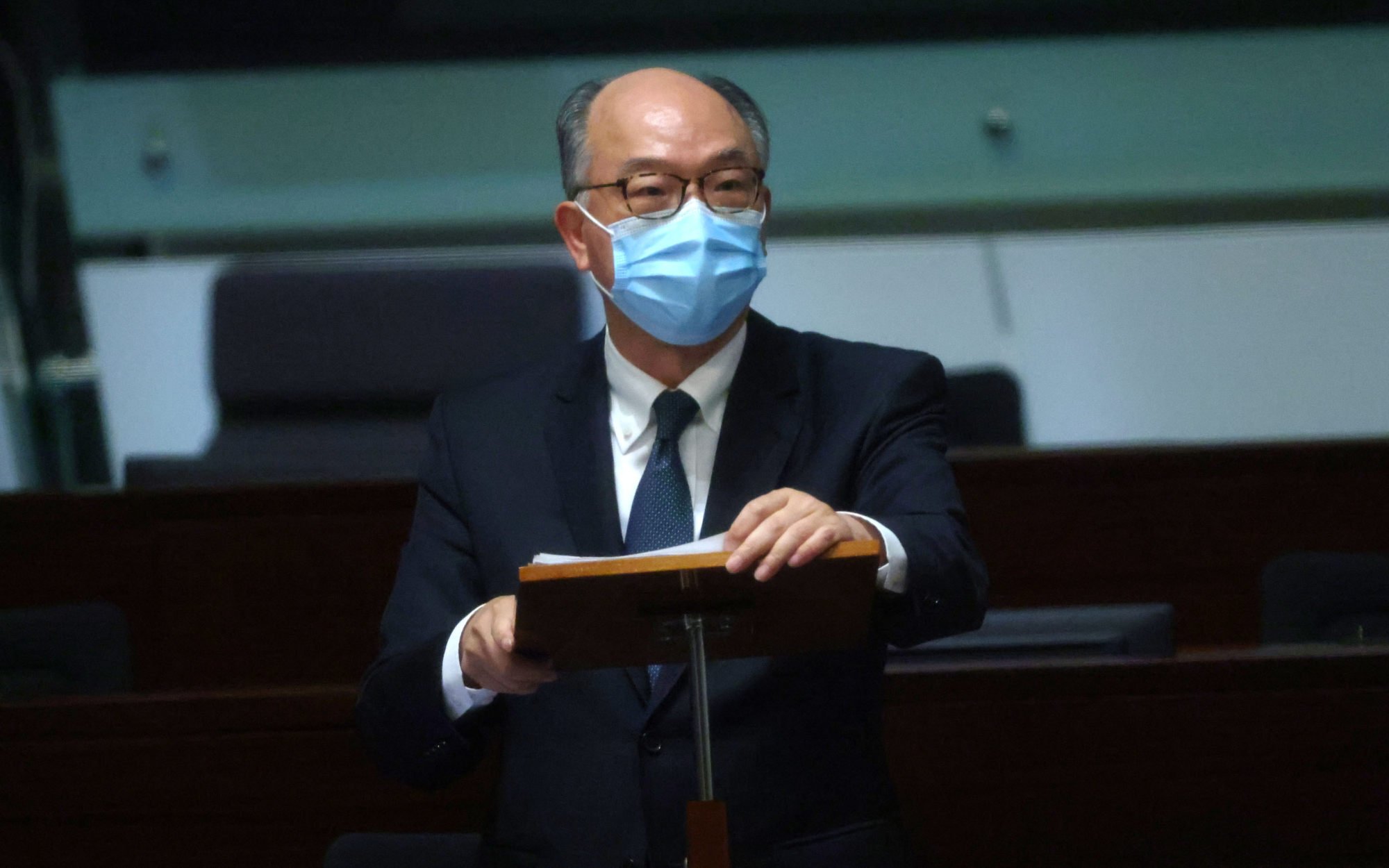
Number of Hong Kong families in subdivided flats set to hit record high, but housing chief says city on track to meet long-term demand for better homes
- Housing minister says public-private split to remain at 70-30 amid ongoing demand for government flats, for which families are now waiting 5.9 years on average
- Projected number of households living in poor conditions, meanwhile, will rise to 127,000 over the next decade, up from the 2020 report’s predicted 122,000.
The number of families living in subdivided flats and other cramped spaces will hit a record 127,100 over the next decade, but Hong Kong’s housing chief says the government is on track to meet the demand for better homes in the long term.
Secretary for Transport and Housing Frank Chan Fan on Wednesday said the government’s 10-year housing supply target across the public and private sectors would remain unchanged from the 2020 estimate of 430,000.
“Considering the keen demand for public sector housing, and the need to provide a steady supply of private flats, we will keep the public-private housing split at 70-30,” said Chan, who is in charge of reviewing and updating the city’s rolling 10-year housing strategy annually.
Based on the official goal of public sector housing accounting for 70 per cent of fresh supply, the Transport and Housing Bureau will keep its current target of providing 301,000 new flats over the next 10 years.
About 210,000 of those would be public rental flats or subsidised homes for sale under two schemes that target different income groups.
The private sector, meanwhile, is to deliver the other 30 per cent, or 129,000 homes.
The strong demand for public housing shows no sign of easing, with families facing an average waiting time of 5.9 years for a flat, the longest in 22 years.
The supply target is calculated from the projected demand in the government’s Long Term Housing Strategy, which takes into account factors including the net increase in the number of households, households to be displaced by redevelopment, and the needs of those living in undesirable dwellings such as subdivided flats.

The net increase in the number of households in the next decade has been revised downwards in the strategy, from 205,200 to 197,300, while the figures for residents living in undesirable dwellings and those expected to be displaced by redevelopment have both increased.
The projected number of households living in poor conditions has risen to 127,000 over the next 10 years, up from 122,000 previously. That includes those living in temporary housing such as rooftop huts, industrial or commercial buildings, subdivided flats, cubicles and bed spaces.
In her October policy address, Chief Executive Carrie Lam Cheng Yuet-ngor said her administration had already identified about 350 hectares (865 acres) of land on which to build 330,000 public housing flats over the next 10 years.
DAB calls on government to boost supply of public, subsidised flats by half
The housing chief on Wednesday said that in the 10- to 15-year period after 2031-32, supply could reach 565,000 to 686,000 flats, with at least 27 per cent of those in the Northern Metropolis, the city’s ambitious plan to turn parts of the New Territories into an economic and residential hub.
Earlier this year, Xia Baolong, director of the state-level Hong Kong and Macau Affairs Office, called on local officials to eliminate subdivided flats and cage homes by 2049, noting the priority for the city was to tackle the housing crisis.
Addressing the rising number of inadequately housed families and whether the bureau had specific plans to fulfil Beijing’s demand to eradicate tiny homes, Chan promised to tackle the problem “at the source” by finding more land and making it ready to build projects.
“Whatever measure introduced in the short term is transitionary relief,” he said.

Kenny Ng Kwan-lim, a member of Kwai Chung Subdivided Flats Residents Alliance, urged the government to implement more short-term measures to help low-income tenants, including expanding a cash allowance scheme to single applicants.
“Some tenants of subdivided flats we know have been waiting to be allocated a public housing flat for more than eight years,” Ng said. “We’ve seen more kinds of subdivided flats in recent years, including some in industrial buildings, or squatters.”
Currently, families and single elderly public housing applicants can apply for a cash subsidy up to HK$3,900 per month. About 60,000 eligible households had received the allowance as of end-October.
Meanwhile, Chan said he welcomed initiatives from private developers to provide subsidised housing for the public.
New World Development on Monday announced the launch of subsidised homes at discounts ranging from 40 to 50 per cent, aimed at helping lower-income groups get on the property ladder. It will offer 300 one-, two- and three-bedroom flats on a site in the western New Territories.
“So far only one developer has approached us; if other developers are interested, they are welcome to get in touch with me,” he said.



